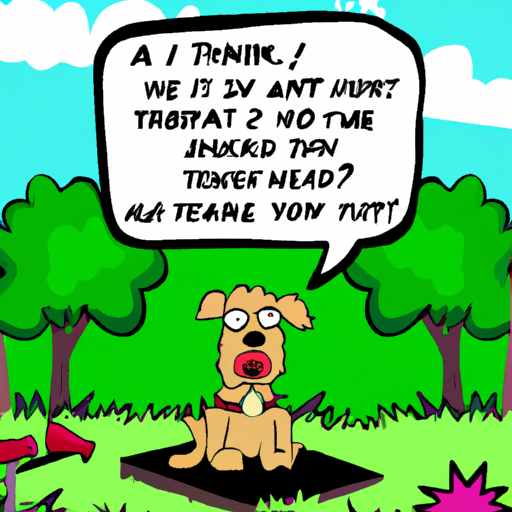As a caregiver, you’re likely familiar with the various sounds your dog can make. From whining to howling, each sound is unique and it’s important to understand what they all mean. In this article, you’ll learn how dogs bark and what their barks might be trying to communicate.
Understanding the Science Behind Barking
Dogs bark as a form of communication. This is their way of expressing emotions, alerting you to potential danger, or simply getting your attention. The process of barking involves both the brain and the larynx (voice box).
- The Brain – The dog’s brain sends a signal to their larynx when they want to bark.
- The Larynx – The larynx then vibrates, producing the sound we know as barking.
This process is similar to how humans use their vocal cords to speak.
Identifying Different Types of Barks
You’ve probably noticed that your dog’s barks can vary in tone, volume, and frequency. This isn’t random. Different types of barks often mean different things. Here’s a basic guide:
- Low-Pitched Barks – These could mean your dog is threatening someone or something.
- High-Pitched Barks – These are often signs of excitement or anticipation.
- Continuous, Rapid Barks – Your dog might be alerting you to potential danger.
Interpreting Your Dog’s Barks
Understanding the meaning behind your dog’s barks can help you respond appropriately and strengthen your bond. Here are some common interpretations:
| Type of Bark | Possible Meaning |
|---|---|
| Prolonged, Low-Pitched Bark | A perceived threat |
| Short, High-Pitched Bark | Excitement or playfulness |
| Series of Rapid Barks | Alert to potential danger |
Remember, these are general interpretations. Your dog’s barks may have their unique meanings, which you’ll learn over time.
Training Your Dog Not to Bark Excessively
While barking is natural, excessive barking can be a problem. If your dog is barking too much, here are some steps you can take:
- Identify the Cause – Understand what triggers your dog’s excessive barking.
- Provide Distractions – Toys or treats can help distract your dog from the trigger.
- Use Positive Reinforcement – Reward your dog when they stop barking on command.
Common Questions About Dog Barking
Q: Why does my dog bark at nothing?
A: They might be bored, anxious, or hear something you can’t.
Q: Is it bad to yell at your dog for barking?
A: Yes, it can increase their anxiety and lead to more barking.
Q: How can I teach my dog to bark on command?
A: Use a trigger word and reward them when they bark.
Q: Can I use a bark collar to control my dog’s barking?
A: It’s generally better to use positive reinforcement techniques.
Remember, understanding your dog’s barks is a journey, not a destination. It takes time and patience. But with careful observation and a little bit of knowledge, you’ll soon be able to communicate with your furry friend more effectively.



